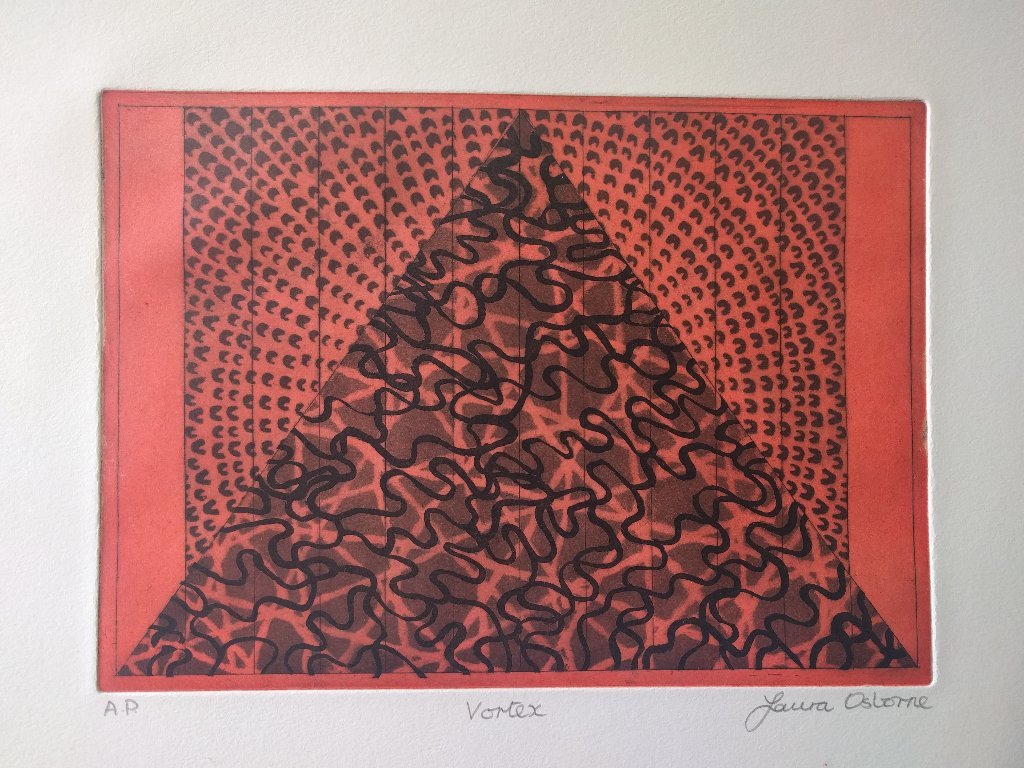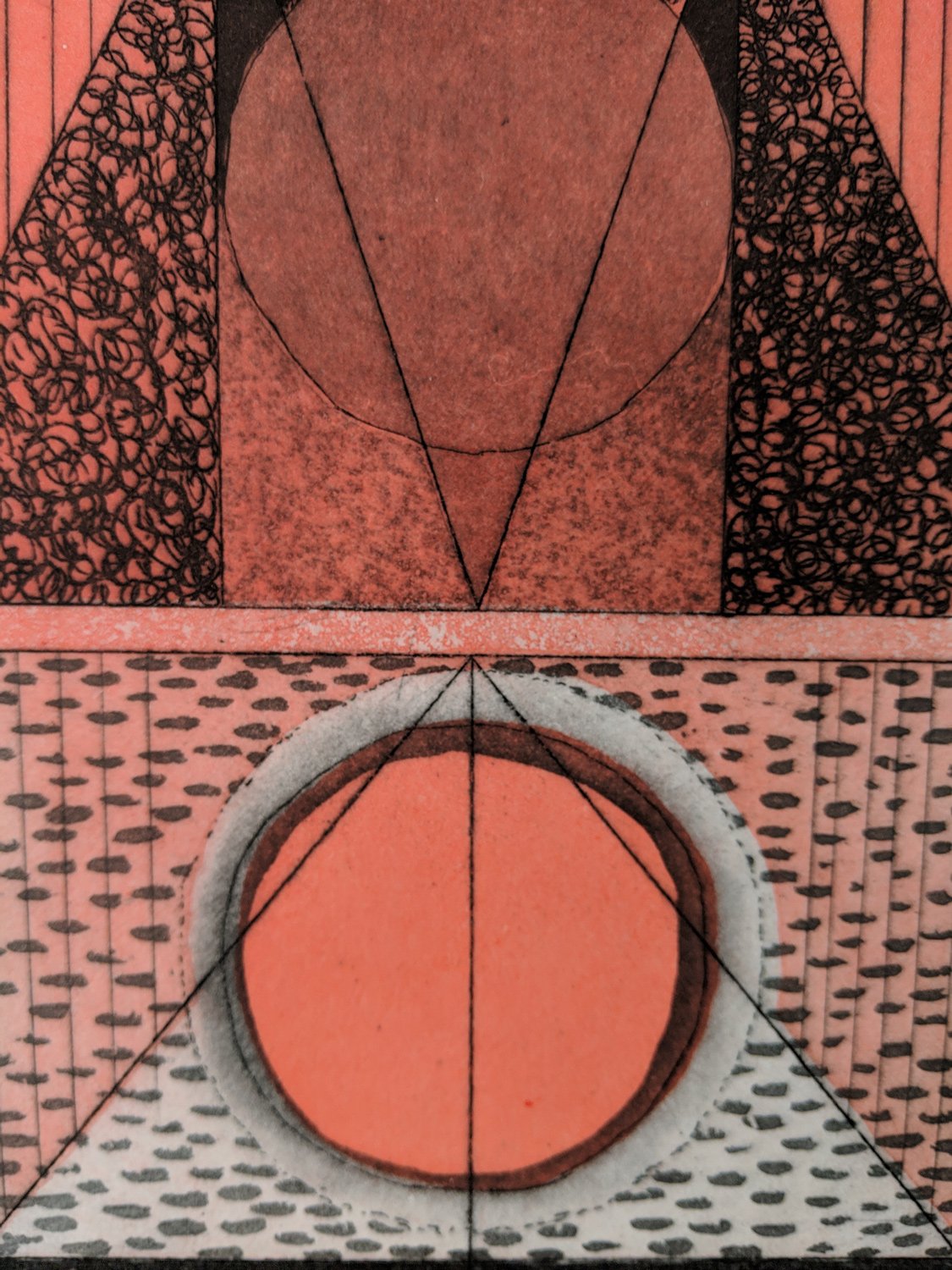Coloured Etchings 2019
When I first learned to use the etching process, we started off with black ink. I wanted to introduce colour and began by using multiple plates. The technique at the time was to drill a small hole in the plates at exactly the same position. This enabled perfect registration and vibrant colour as the paper was kept moist and the ink allowed to dry. Then the second colour was printed using the pin holes.
This technique is no longer in use. Registration is now done by trapping the paper under the roller and using metal blocks on two sides of thefirst plate before removing it and introducing the second plate. The blocks are then removed and the second plate is run through the press.
The prints seen here use this method of registration, except for Osmosis which is printed in black and then hand coloured using Sennelier drawing ink.
I entered this print into the Common Ground Print Prize, based in Castlemaine, Victoria. The judges gave Osmosis a special mention. Here is what they wrote:
‘Laura Osborne’s Osmosis offers us another visionalso inspired by science and the natural world, taking solace in this powerful but invisible process of Osmosis. The way she reflects through the abstract form on the ways that individually and collectively we take on each other’s views and visions offers an inspiring vision for overcoming what otherwise feels like a divisive and polarising time for humanity. Both works are artistically strong and we congratulate the artists in melding form and message so beautifully.’
I use Sennelier drawing ink on many of my etchings. It combines beautifully with the etching ink. The pigments are very vivid as they are shellac based and waterproof.



